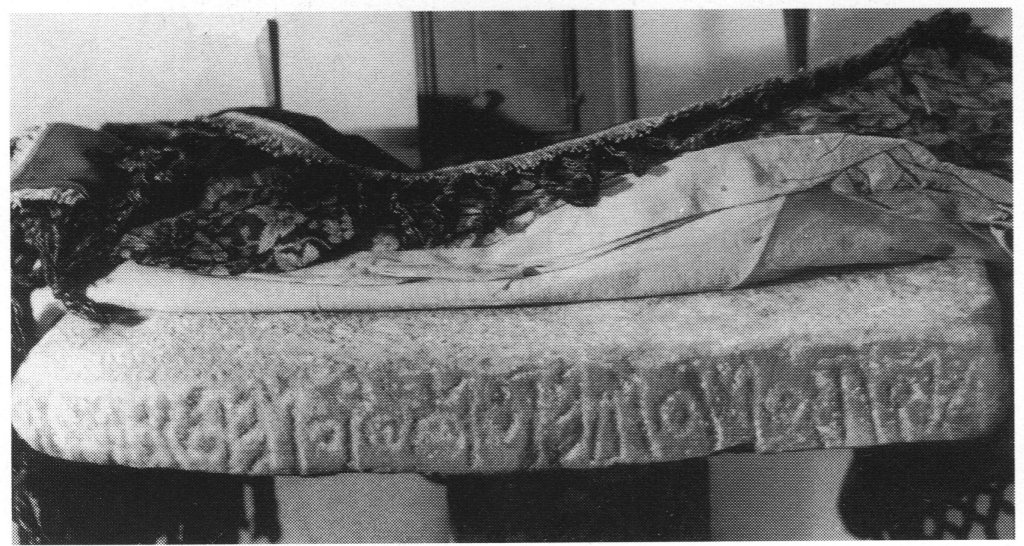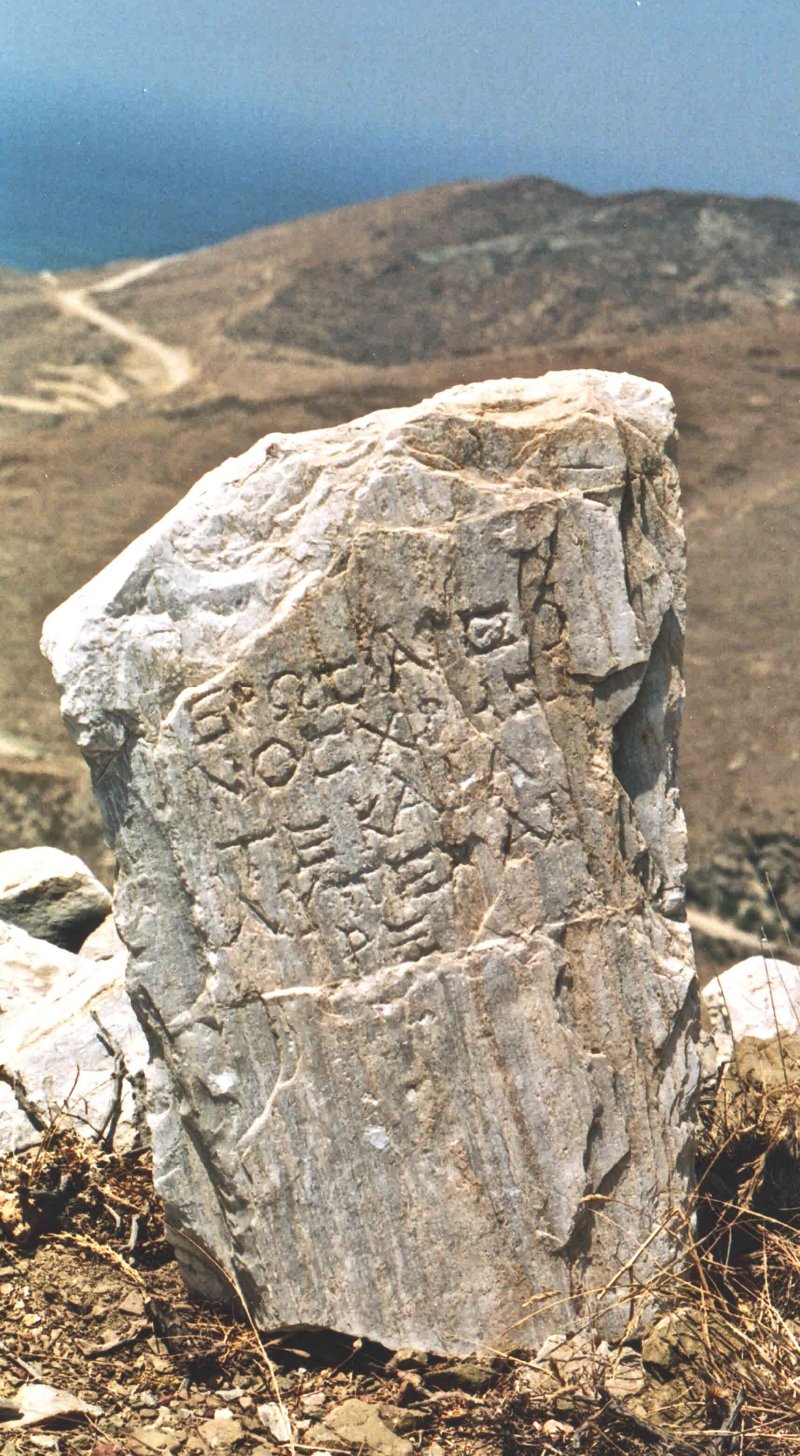α
ON ARCHEOLOGIES AND INSCRIPTIONS
Archaeology contrasts with the two principal techniques used until now by ‘archivists’: formalization and interpretation. Archivists have often jumped from one technique to the other, while relying on both at the same time. Sometimes their analysis of a phrase isolates a logical proposition which then operates as its manifest meaning: in this way they move beyond what is ‘inscribed’ to an intelligent form, which no doubt in turn can be inscribed on a symbolic surface but is in itself of a different order to that of the inscription. On other occasions, however, they move from one plane to a second, and see the two as being secretly related: in this way the initial inscription is doubled by a second inscription. The latter no doubt contains a hidden meaning but, above all, it is not the same in terms either of inscription or of content. These two extremes indicate the two poles around which interpretation and formalization gravitate uneasily. The one isolates what is overstated in the phrase; the other what is unsaid. That is why logic likes to show how a single phrase in fact involves at least two propositions, while interpretative disciplines, on the other hand, show that a phrase has gaps which must be filled. Methodologically, then, it seems very difficult to stick to what is actually stated, to nothing but the actual inscription of what is said. […]
Foucault instigates a very different project: his endpoint is the statement, the simple inscription of what is said, the positivity of the dictum. Archaeology “does not attempt to evade verbal performances in order to discover behind them or below their apparent surface a hidden element, a secret meaning that lies buried within them, or what emerges through them without saying so; and yet the statement is not immediately visible; it is not given in such a manifest way as a grammatical or logical structure (even if such a structure is not entirely clear, or is very difficult to elucidate). The statement is neither visible nor hidden.” (Gilles Deleuze, Foucault, p. 15-16, University of Minnesota Press, 1988. Translated by Sean Hand.)
NOTHING DEEPER THAN SKIN
Isn’t it also a way of working with “surfaces?” You used to like Valery’s maxim that “there’s nothing deeper than skin…”
Yes, it’s a wonderful saying. Dermatologists should inscribe it on their doors. Philosophy as a general dermatology or art of surfaces (I tried to describe such surfaces in The Logic of Sense). The new forms of image give the problem a new impetus. It’s in Foucault himself that surfaces become essentially surfaces on which things are inscribed: this is the whole problem of utterances, which are “neither visible nor hidden.” Archaeology amounts to constituting a surface on which things can be inscribed. If you don’t constitute a surface on which things can be inscribed, what’s not hidden will remain invisible. Surface isn’t opposed to depth (from which one resurfaces) but to interpretation. Foucault’s method was always opposed to any interpretative method. Never interpret; experience, experiment… The theme of folds and enfolding, so important in Foucault, takes us back to the skin. (Gilles Deleuze, Negotiations, 1972-1990, p. 87, Columbia University Press, New York, 1995. Translated by Martin Joughin.)
74 INSCRIPTIONS
Many of the seventy-four inscriptions reported by Hiller von Gaertringen for Anafi in the first publication of Inscriptiones Graecae Insularum(abbreviated as I.G.) are described, in the Latin commentary which accompanies each entry, as located in churches, chapels and private houses on the island, as well as on Kastelli and within or near the precincts of the Lower Monastery, the site of which overlaps that of Apollo’s temple (I.G. 1898, vol. XII, part 3). The commentaries provide additional evidence of the extent to which ancient remains were preserved as curiosities, incorporated in the building of chapels, churches and houses (even field cottages), and passed on to foreigners, presumably for some monetary consideration (the name of the French consul Alby, who was stationed on Thera in the first half of the nineteenth century, comes up in five cases (I.G. 268, 269, 282, 285, 289). As might be expected, the Monastery is given as the location for the majority of inscriptions (fourteen), and Kastelli, the hill on which the Hellenistic city is located, for thirteen. One (I.G. 302) is described as part of the “rural cottage of the demarch [proedros, equivalent to ‘mayor’] in 1890”, one forms the back wall of a cistern in the village house of “Sophocles Syrigus” (I.G. 280) and another (I.G. 256) reads in Latin “Murus nunc gallinario tectus est”, “It has now become the wall of a henhouse.” One inscription (I.G. 319) had been taken by an Anafiot to Athens, and like a number of other people, he is described as making a papier-maché “squeeze” of the inscription for the epigrapher, indicating the degree of cooperation between local people and intrusive archaeologists. (Margaret E. Kenna, “Apollo and the Virgin: The Changing Meanings of a Sacred Site on Anafi”, History and Anthropology, 20: 4, 487-509, 2009.)
“NON LOCATED” NOT “LOST” INSCRIPTIONS
Examples demonstrating the adventurous history of the inscribed stones are the three inscriptions presented here. The first one is from the island of Anaphe. It is a fragmentary list of proxenoi of the 4th cent. B.C. It was first seen and copied by L. Ross, Abh. der Münch. Akad. II 2, 1838, 443 sqq. (Archäologische Aufsätze II 525 sqq.), on the island of Anaphe; a little later by K. S. Pittakes, Ἐφ. Ἀρχ. 1840, 485 («εὑρέθη εἰς τὴν νῆσον Ἀνάφην πλησίον τοῦ ἐκεῖ μοναστηρίου τῆς Παναγίας Καλαμιότισσας»), and almost 60 years later (1895) by Hiller von Gaertringen who included it in IG XII 3, 251.
I first saw the inscription in 1990, and several times in later years (1996, 2005, 2007) I had the opportunity to study it. It is still in the same place where it was seen almost two centuries ago, i.e. built into the ground by the door of the (old) winepress of the Monastery near the south beach (“in cella torcularia inter coenobium Παναγίας Καλαμιότισσας et portum meridionalem sita;” Hiller). (A. P. Matthaiou, “Non located” not “Lost” Inscriptions, Greek Epigraphic Society website.)
November 2016


